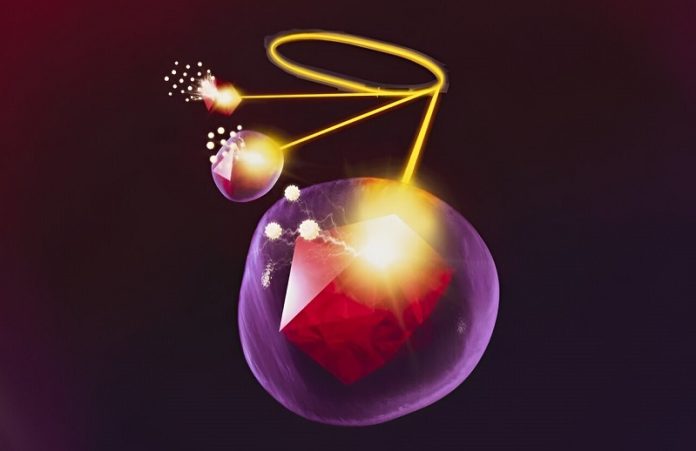
You might think diamonds are just for jewelry, but scientists are finding some pretty amazing uses for tiny diamond pieces, known as “nanodiamonds.”
They’re so small you’d need 40,000 of them to be as wide as a single hair!
A team from San Jose State University recently figured out how to make these nanodiamonds even more useful by giving them a special coating.
What makes nanodiamonds unique is that they respond to magnetic fields, electric fields, and light.
This makes them great for use in things like super-fast quantum computers and even medical research. For example, if you shine a green light on these nanodiamonds, they glow red.
This feature allows researchers to track them when placed in living cells. But there’s a catch: these diamonds have sharp edges, and they can’t easily be controlled to go to specific places inside the body, like cancer cells.
That’s where the coating comes in. By adding a layer of silica, the main ingredient in sand, the sharp edges get covered up, making them safer for use in living cells.
The silica layer also allows scientists to add “tags” to guide the diamonds towards specific cells. But until now, no one really knew how the diamond and silica stuck together so well.
The research team, led by Professor Abraham Wolcott, used powerful X-ray technology to study how silica and diamond bond. They discovered that alcohol chemical groups on the diamond’s surface are key to making the silica stick well.
This is a big deal because understanding how these two materials bond means they can start experimenting with other materials too.
To find out how the bonding works, the scientists used X-rays from the Stanford Synchrotron Radiation Lightsource, a super advanced facility. They also used some really cool techniques to “see” what chemical groups were on the nanodiamond surface and to measure how thick the silica coating was.
For over a decade, scientists couldn’t agree on how the silica shell formed around the diamond. But this new study clears that up. “Now that we know these finer details, we can better explore new diamond systems,” said Wolcott.
Understanding how the coating works could open doors to more uses for nanodiamonds, like sensing things at the quantum level or labeling specific cells in the body.
Karen Lopez, a Ph.D. student who worked on the study, said, “Now that we understand how the silica shell forms, we can begin optimizing it and expanding to other types of materials.”
So, what’s next? The team is excited to try coating nanodiamonds with different materials like titanium and zinc, which could make these tiny diamonds even more versatile in medicine and technology.
This research brings us a step closer to making better “smart diamonds” that could play a huge role in future medical treatments and advanced technologies.
Follow us on Twitter for more articles about this topic.



